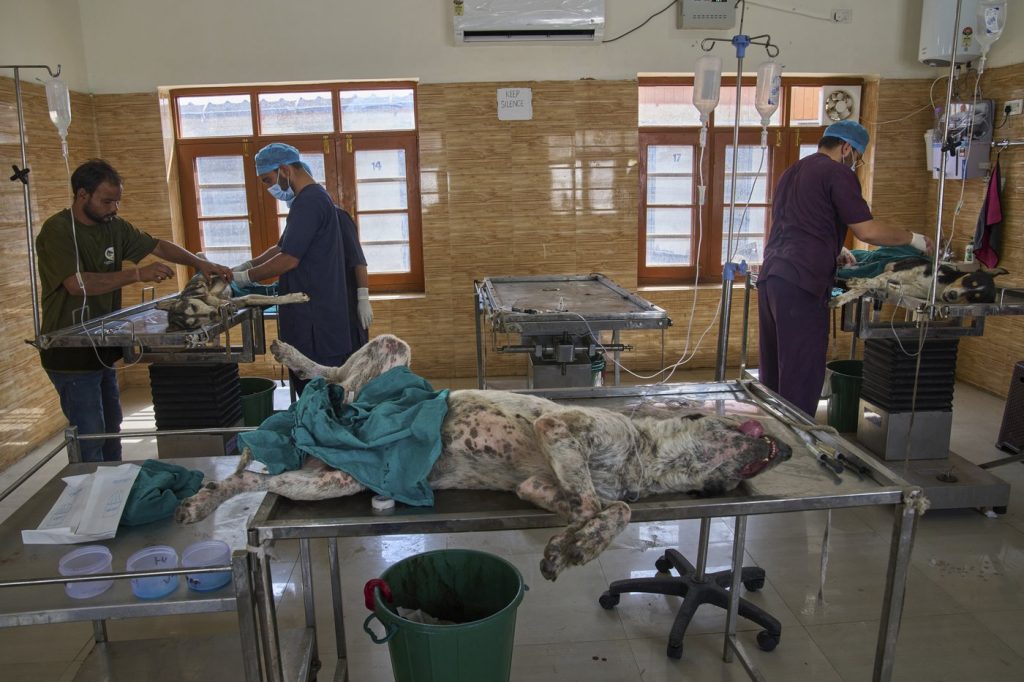SRINAGAR, India (AP) – In the outskirts of Srinagar, Indian-controlled Kashmir, 60-year-old Feroz Ahmed takes cautious steps during his early-morning walks, armed with a stick to ward off potential threats from stray dogs. Though he has never personally experienced an attack, he remains vigilant due to increasing incidents in the area.
Awareness of the stray dog issue has grown following alarming incidents, such as the unfortunate case of 6-year-old Rehmat Ashraf, who was bitten on the face by a stray dog outside her home. Despite undergoing plastic surgery, her injuries have not healed properly, leaving her with a noticeable scar. Another resident, a 60-year-old woman known as Fazi, faced a harrowing attack by stray dogs, resulting in severe injuries across multiple areas of her body.
The stray dog crisis is not limited to Srinagar but is a widespread problem affecting many major cities in India. Estimates suggest that New Delhi is home to between 500,000 and 1 million stray dogs, while a 2023 municipal survey found that Bengaluru counted 279,335 stray dogs within its city limits. These figures underline the magnitude of the challenge faced by urban areas across the country.
In response to the growing concerns over dog attacks and population control, India's top court recently directed the authorities in New Delhi to capture, sterilize, and shelter stray dogs. Following pushback from animal welfare activists, the court modified its order, stipulating that the sterilized dogs should be returned to their original locations after treatment.
Srinagar has reported an alarming over 6,000 dog bite incidents last year, with more than 80% classified as severe. To tackle this rising issue, the local municipal authority has launched a significant initiative aimed at capturing and sterilizing over 21,000 stray dogs by the end of 2026. Dog catchers are employing modern methods, utilizing smartphone applications and cameras to document the locations from which the dogs are captured so that they can be released back to their original neighborhoods after the sterilization process.
Dawood Mohammad, who operates an animal rescue center in Srinagar with his wife Mariya Mushtaq, offers a different perspective, suggesting that stray dogs are not inherently dangerous. He emphasizes that with proper treatment, these dogs can be affectionate companions. He explains that aggression is often a defensive response from mother dogs protecting their young, which leads to most bites coming from female dogs with puppies.
As the municipal authorities and animal welfare organizations navigate the complexities surrounding the stray dog population, it remains crucial to balance human safety and animal welfare in urban settings. The ongoing sterilization initiatives reflect an attempt to manage the issue comprehensively while ensuring that the dogs are treated humanely.
Given the rising number of incidents and the complexities involved in addressing the stray dog population, both local authorities and residents face a pressing need to engage in effective strategies that reduce risks while promoting the welfare of these animals.










